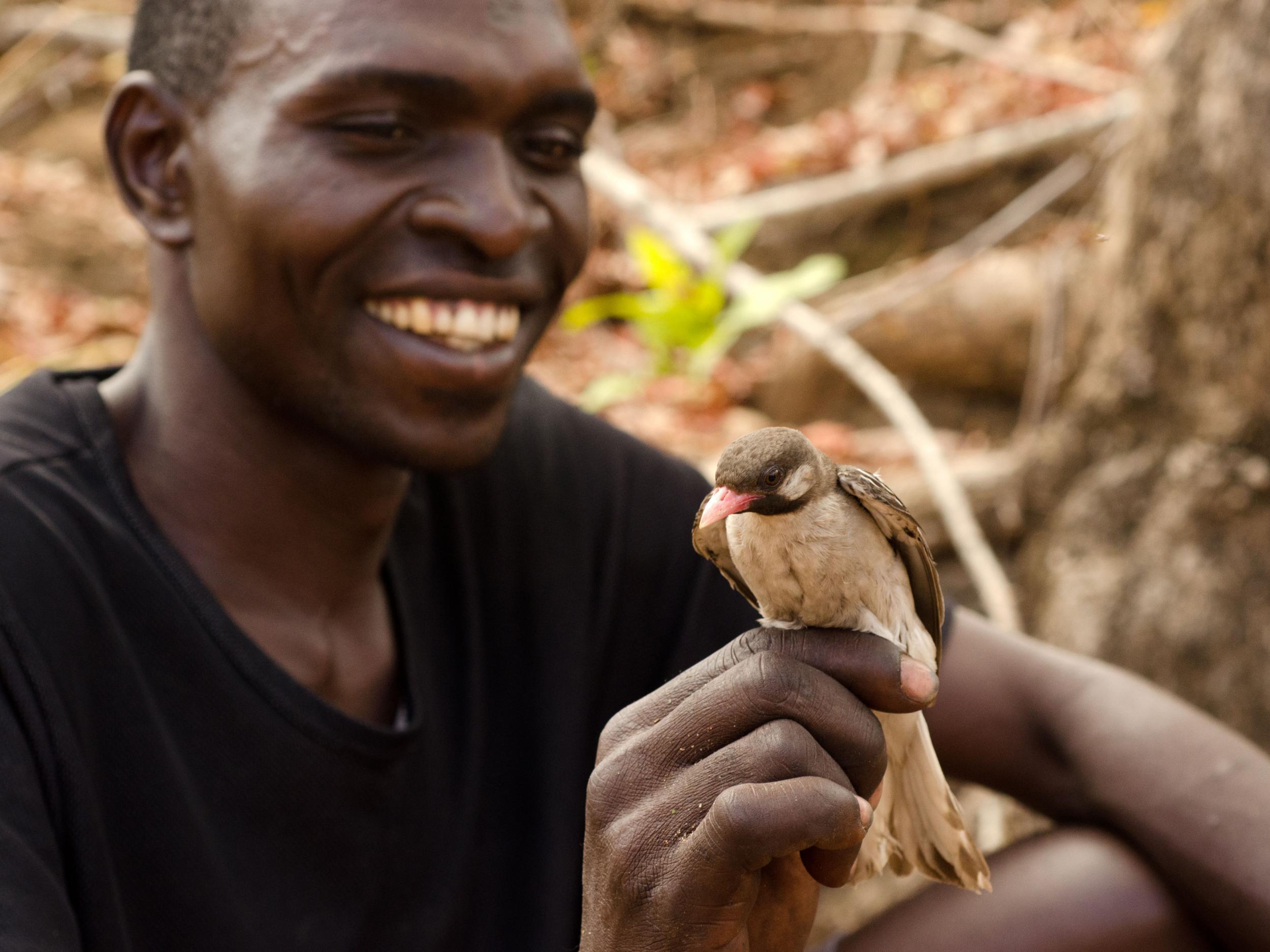Humans and wild birds ‘talk’ to each other as they hunt for bees’ honey
Researchers discover birds understand special calls made by honey-hunters to attract their attention

Birds and humans ‘talk’ to each other as they hunt bees nests together in the forests of Mozambique, according to a new study.
As their name suggests, honeyguides have been known to help hunters find honey for hundreds of years, but researchers wanted to find out if there was genuine two-way communication.
This kind of collaboration between people and wild animals is incredibly rare. The only other example known today is of dolphins helping fishermen in Brazil, although the Ancient Roman philosopher Pliny the Elder wrote of similar behaviour about 2,000 years ago.
In the Niassa National Reserve in Mozambique, the Yao people use a special call to attract the honeybirds, a loud trill following by a short grunt: “Brrr-hm,” which can be listened to here.
The birds also give a call to attract people’s attention and then fly from tree to tree to direct them to the bees’ nest.
While humans are after the honey, the birds feed on the wax, so there is no direct competition.

The birds are better able to find bees’ nests, but benefit from the hunters' ability to subdue the bees with smoke and break open the nest, a process that sometimes involves cutting down the tree.
But the question was whether the birds were actually responding to the specific call made by people or if they simply responded to the presence of humans and hoped they would be in the mood for a honey hunt.
One of the researchers, Dr Claire Spottiswoode, of Cambridge University, said: “What's remarkable about the honeyguide-human relationship is that it involves free-living wild animals whose interactions with humans have probably evolved through natural selection, probably over the course of hundreds of thousands of years.
“We’ve long known that people can increase their rate of finding bees' nests by collaborating with honeyguides, sometimes following them for over a kilometre.”
She said when she heard the Yao people used a traditional call to attract the birds she found this to be “instantly intriguing”.
“Could these calls really be a mode of communication between humans and a wild animal?” Dr Spottiswoode said.
To find out if the birds understood that the brrr-hm sound was a specific request for help, she made recordings of it and two other control sounds: arbitrary words called out by the hunters and calls made by another bird species.
“The traditional ‘brrr-hm’ call increased the probability of being guided by a honeyguide from 33 per cent to 66 per cent, and the overall probability of being shown a bees’ nest from 16 per cent to 54 per cent compared to the control sounds,” Dr Spottiswoode said.
“In other words, the ‘brrr-hm’ call more than tripled the chances of a successful interaction, yielding honey for the humans and wax for the bird.”
She said that people in other parts of Africa used different calls to attract the same species of birds.
The greater honeyguide is a master of deception and exploitation as well as cooperation... a proper Jekyll and Hyde of the bird world
“For example, our colleague Brian Wood's work has shown that Hadza honey-hunters in Tanzania make a melodious whistling sound to recruit honeyguides,” she said.
“We’d love to know whether honeyguides have learnt this language-like variation in human signals across Africa, allowing them to recognise good collaborators among the local people living alongside them.”
Honeyguides have clearly recognised the ability of other species to help them.
Like cuckoos, they lay eggs in the nests of other birds and when the chick hatches it uses sharp hooks on its beak to kill off its foster siblings and monopolise the supply of food.
“The greater honeyguide is a master of deception and exploitation as well as cooperation,” Dr Spottiswoode said, “a proper Jekyll and Hyde of the bird world.”
A paper about the research, called ‘Reciprocal signaling in honeyguide-human mutualism’, was published in the journal Science.
Join our commenting forum
Join thought-provoking conversations, follow other Independent readers and see their replies
Comments